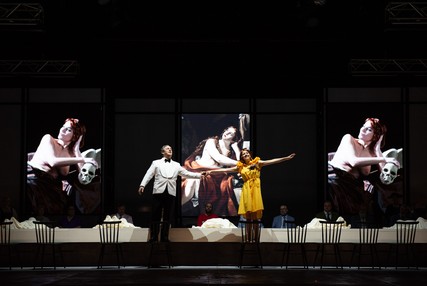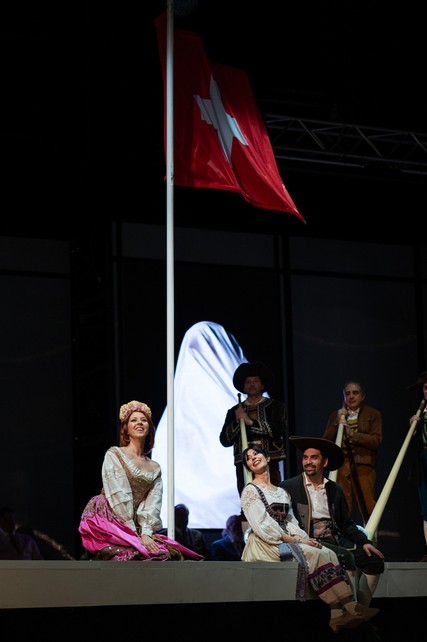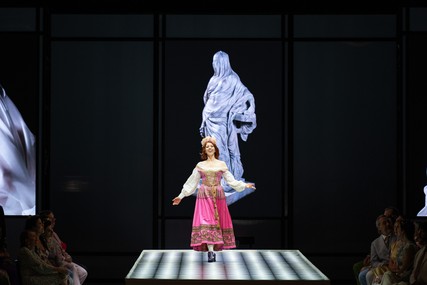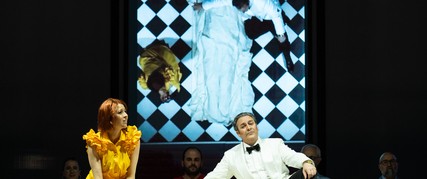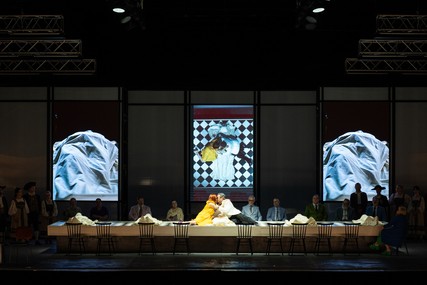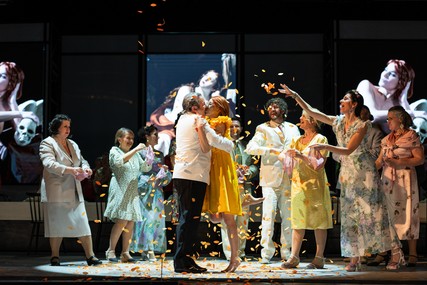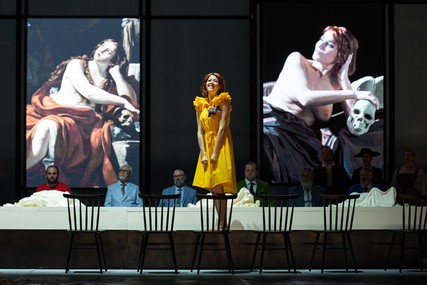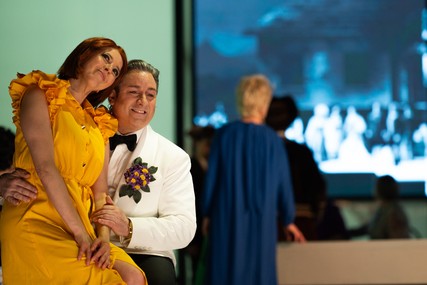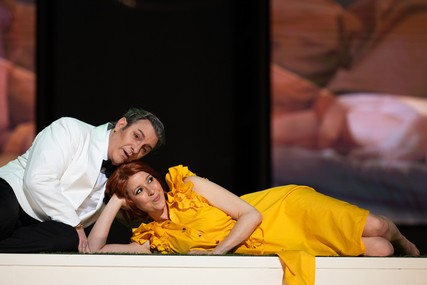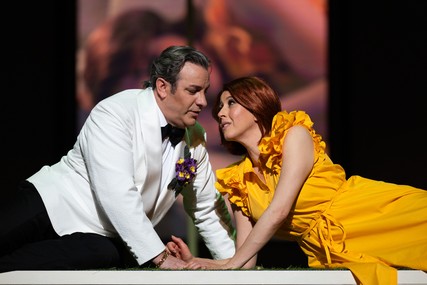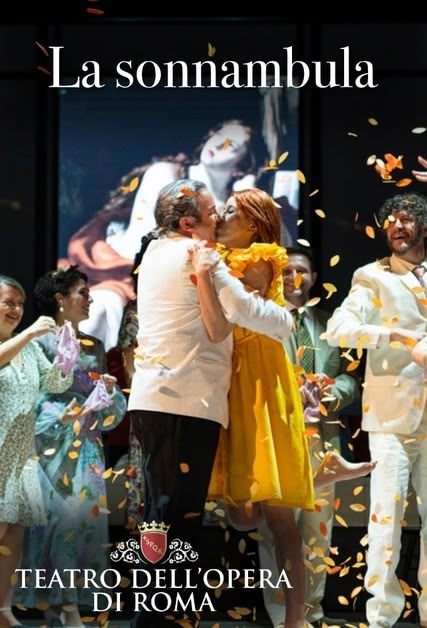Der Belcanto ist der Spitzentanz unter den klassischen Gestalten des Gesangs - und Lisette Oropesa seit einigen Jahren unter den Sopranistinnen seine amtierende Königin. Schließlich beherrscht die US-Amerikanerin mit kubanischen Wurzeln alles, was eine Sängerin hier können muss: perlende Läufe, saubere Sprünge, Triller, rasante Verzierungen, in unterschiedlichen Artikulationen. Doch nichts davon klingt bei ihr technisch, gar mechanisch, weil der Grundton ihres Soprans warm ist, einen lyrischen und weichen Kern aufweist, der, stets umflort von einem sanften Schatten, einen hohen Wiedererkennungswert hat. Wie beim Ballett muss beim Belcanto das Künstliche natürlich wirken, das Akrobatische zum Ausdruck des Menschlichen werden - ein Spagat, den Oropesa so souverän beherrscht, dass sie für die ebenso ungewöhnlichen wie anspruchsvollen Rollen auch im Heimatland des Belcanto gefragt ist, in Italien. Oropesa in Rom hören: Die vielen kleinen Noten kommen gestochen klar, aber nie pieksig daher; längere werden mittels feiner Binnendynamik belebt; Spitzentöne stechen nie grell aus der Linie, überstrahlen aber bei Bedarf mühelos den ganzen Chor. Und auch darstellerisch macht sie ihre Amina hier zum reizend weltfremden, in seiner eigenen Weise durchaus frechen Mädchen. Was Lisette Oropesa auch in der berühmtesten Arie der Oper zugutekommt, die Bellini wirkungsvoll an den Schluss gestellt hat: "Ah! non credea mirarti". Denn Amina muss ein zweites Mal schlafwandeln, um ihre Unschuld zu beweisen, bevor die Hochzeit doch noch stattfinden kann. Was bestens ins Arienschema des Belcanto aus einem langsamen Cantabile und einer schnellen Cabaletta passt. Im Cantabile lässt Oropesa ihren schier endlosen Atem strömen, gibt ihm damit Dringlichkeit. Und dem Koloraturjubel der Cabaletta fügt sie selbstverständlich noch einige eigene, noch rasantere Wendungen hinzu. Wie sich das gehört, wenn man es kann.
Bel canto is the pinnacle of classical singing styles, and Lisette Oropesa has been its reigning queen among sopranos for several years. The US-American with Cuban roots masterfully possesses all the skills a singer must have: sparkling runs, clean jumps, trills, rapid embellishments in various articulations. Yet, none of this sounds technical or mechanical in her performance because the fundamental tone of her soprano is warm, with a lyrical and soft core that, always surrounded by a gentle shadow, has a high degree of recognition. Similar to ballet, in bel canto, the artificial must appear natural, and the acrobatic must express the human - a balancing act that Oropesa commands so expertly that she is sought after for equally unusual and demanding roles in the homeland of bel canto, Italy. Listening to Oropesa in Rome: the numerous small notes are crystal clear, never sharp; longer notes are enlivened by subtle inner dynamics; high notes never harshly stand out from the line, yet effortlessly outshine the entire chorus when necessary. And as an actress, she transforms her Amina into a charmingly otherworldly, somewhat cheeky girl in her own way. What also benefits Lisette Oropesa in the most famous aria of the opera, which Bellini strategically placed at the end: "Ah! non credea mirarti". Because Amina must sleepwalk a second time to prove her innocence before the wedding can finally take place. This perfectly fits the aria structure of bel canto with a slow cantabile and a fast cabaletta. In the cantabile, Oropesa lets her seemingly endless breath flow, imbuing it with urgency. And in the coloratura jubilation of the cabaletta, she naturally adds some of her own, even more rapid turns. Just as should be done when you can do it.
— Michael Stallknecht • Süddeutsche Zeitung




